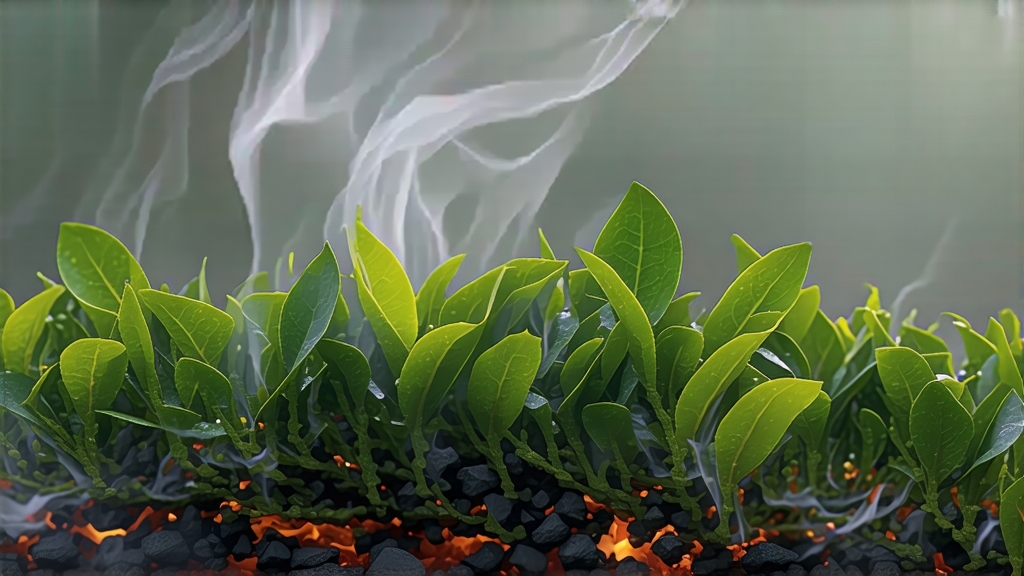
Ask most tea lovers to name the first black tea ever created and they will probably hesitate; mention Lapsang Souchong, however, and eyes light up with images of glowing camp-fires and mysterious Chinese mountains. Hailing from the Wuyi massif in the far north-western corner of Fujian province, Lapsang Souchong is not merely a curiosity—it is the primogenitor of every black tea on earth, the leaf that taught the world how to oxidise. Its story begins in the late Ming dynasty, around 1604, when passing Qing dynasty armies commandeered the village of Tongmu overnight. Tea farmers, anxious to dry their half-finished leaf before the soldiers arrived, rushed the withering baskets over fresh pine embers. The smoke infused the leaf, the oxidation deepened, and an entirely new category—hong cha, “red tea” to the Chinese—was born. Dutch traders carried the novel, long-keeping leaf from the port of Xiamen to Amsterdam in 1606; within decades it had perfumed the courts of Versailles and St. Petersburg, and the British East India Company was scheming to pirate both plant and craft to break China’s monopoly.
Today the tiny Tongmu gorge—barely seven kilometres long—is a national conservation zone accessible only with special permits. Its altitude (600–1 200 m), subtropical mists, and mineral-rich lateritic soil create a terroir so distinctive that the Chinese government granted it Protected Geographical Indication status in 2002. Only leaf picked within this core zone may legally bear the name Zheng Shan Xiao Zhong, “Original Mountain Small Sort,” the formal Chinese name for authentic Lapsang Souchong. Outside the gorge, similar leaf processed in the same way is simply called “smoked black tea”; connoisseurs insist the difference is as dramatic as Grand Cru Burgundy versus generic pinot noir.
Three cultivars dominate Tongmu gardens: Xiao Ye Zhong (Small Leaf Sort), the original shrub with tiny, slow-growing leaves that accumulate sugars and aroma; Wu Niu Zao, an early-spring variety prized for its cocoa note; and the newer Jin Guan Yin hybrid that adds a fleeting orchid sweetness. Farmers still follow the lunar calendar, plucking only the first two leaves and a bud between Qingming and Grain Rain, when spring mists are thickest and polyphenol levels are perfectly balanced.
Processing begins the moment baskets reach the cottage door. First comes withering, spread on large bamboo sieves in the upper loft of the three-storey wooden house. Here, pine logs smoulder in a hearth below, sending gentle heat and wisps of resin upward through slatted floors. Over eight to ten hours the leaf loses roughly 60 % of its moisture, turning from bright emerald to a subdued olive while absorbing the first layer of pine aroma. Once the leaves feel velvety and emit a faint baked-apple fragrance, workers roll them by hand on rattan trays, bruising the cell walls just enough to liberate enzymes for oxidation. The rolled leaf is then piled into shallow bamboo crates and left in a humid, 24 °C room for three to five hours, during which the catechins oxidise into theaflavins and thearubigins, painting the leaf the colour of rusted iron and unlocking malt, honey, and dried-longan notes.
What follows is the step that makes Lapsang Souchong instantly recognisable: smoking over pinus massoniana. In the ground-floor smoking chamber, a tiered wooden rack holds cotton-lined sieves. Below them, fresh pine boughs are burned without flame; their aromatic oils coat the leaf for another six to eight hours, interrupted every thirty minutes by hand-tossing to ensure even absorption. Master smokers judge readiness not by clock but by scent: when the sharp top-note of resin softens into a creamy, vanilla-like bouquet, the tea is moved to the drying loft where 70 °C heat sets the aroma and lowers moisture to 5 %. A final sorting removes stems and yellow leaves, leaving only glossy, jet-black strips that smell simultaneously of pine sap, dried lychee, and dark chocolate.
Because the leaf is robust, it forgives beginner mistakes yet rewards precision. The classic gongfu approach uses a small porcelain gaiwan (120 ml) or Yixing clay pot seasoned only with black teas. Start with 5 g of leaf—